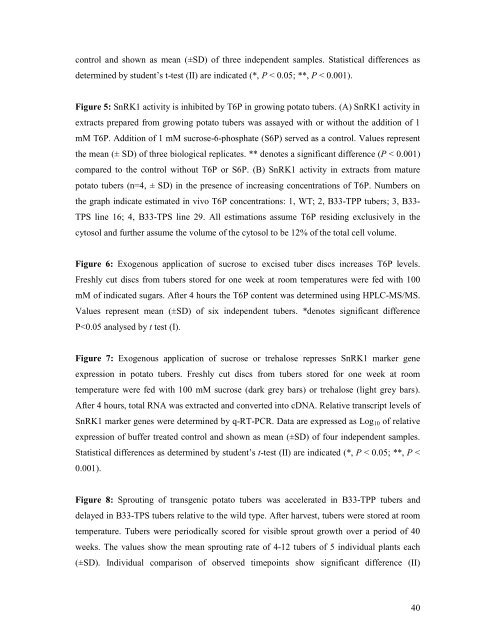B - Plant Physiology
B - Plant Physiology
B - Plant Physiology
Create successful ePaper yourself
Turn your PDF publications into a flip-book with our unique Google optimized e-Paper software.
control and shown as mean (±SD) of three independent samples. Statistical differences as<br />
determined by student’s t-test (II) are indicated (*, P < 0.05; **, P < 0.001).<br />
Figure 5: SnRK1 activity is inhibited by T6P in growing potato tubers. (A) SnRK1 activity in<br />
extracts prepared from growing potato tubers was assayed with or without the addition of 1<br />
mM T6P. Addition of 1 mM sucrose-6-phosphate (S6P) served as a control. Values represent<br />
the mean (± SD) of three biological replicates. ** denotes a significant difference (P < 0.001)<br />
compared to the control without T6P or S6P. (B) SnRK1 activity in extracts from mature<br />
potato tubers (n=4, ± SD) in the presence of increasing concentrations of T6P. Numbers on<br />
the graph indicate estimated in vivo T6P concentrations: 1, WT; 2, B33-TPP tubers; 3, B33-<br />
TPS line 16; 4, B33-TPS line 29. All estimations assume T6P residing exclusively in the<br />
cytosol and further assume the volume of the cytosol to be 12% of the total cell volume.<br />
Figure 6: Exogenous application of sucrose to excised tuber discs increases T6P levels.<br />
Freshly cut discs from tubers stored for one week at room temperatures were fed with 100<br />
mM of indicated sugars. After 4 hours the T6P content was determined using HPLC-MS/MS.<br />
Values represent mean (±SD) of six independent tubers. *denotes significant difference<br />
P

















